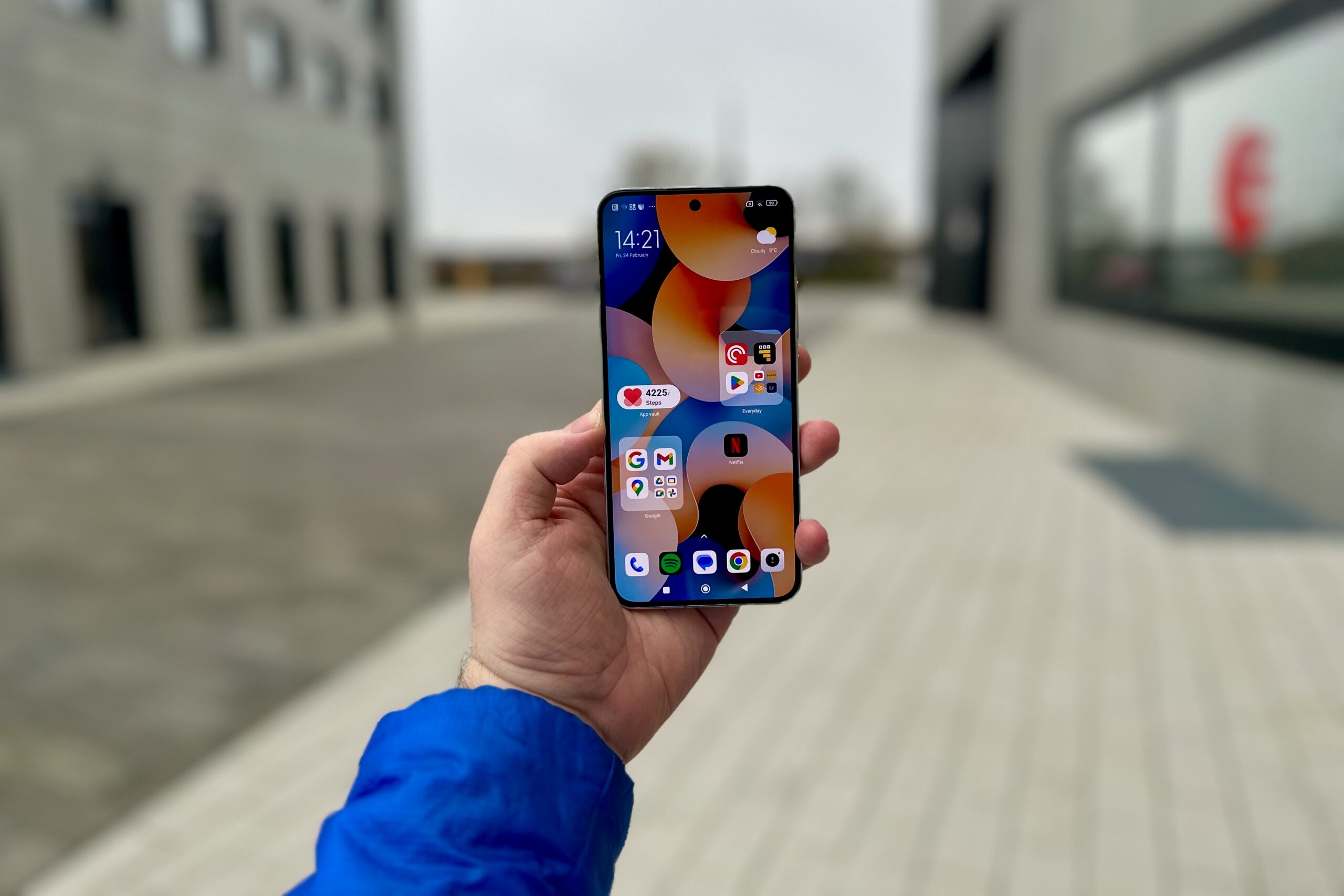Introduction
Deciding that you want an Android phone instead of an iPhone is only half the battle, as there are hundreds and hundreds of Android phones available to buy. So what are the best Android phones in 2023?
In order to answer that question, our team of experts have reviewed every single smartphone that they can get their hands on. We put each phone through a comprehensive testing process, which includes benchmark tests, battery drains, photo comparisons and, of course, day-to-day use for at least a week.
We’ll then award each phone a rating of five, those with the highest scores being considered for a position on this very best list. Everyone has a different priority for an Android phone, whether that’s Instagram-grade photos, top-class gaming performance or even a foldable design. As such, we’ve made sure to include as much variety as possible for this best Android phone list.
If you have a more specific craving for your smartphone, then it’s worth checking out our best camera phone, best gaming phone and best mid-range phone guides which offer more tailored recommendations. And if you want to see how the very best Android phones compare to Apple’s iPhones, then have a look at our best phone roundup.
Best Android phones at a glance
How we test
All the phones included in our Best Android phone list have been thoroughly tested and used by one of our expert reviewers. We will never review a phone based purely on specs and benchmark scores. We use them as our everyday device for the review period, which is usually at least five days but often a lot more.
Whenever you read a phone review published on Trusted Reviews, you should be confident that the reviewer has put their personal SIM card into the phone, synced across their most-used apps and logged into all their typical accounts. We do this so you’ll feel confident in our review and trust our verdict.
Our review process includes a mixture of real-world tests, along with more than 15 measured tests and industry-standard benchmarks. We believe this gives the most rounded view of a device.
Google Pixel 7 Pro
The best Android phone
Pros
- Excellent camera and loads of clever camera tricks
- The best version of Android on the market
- Priced well for the European market
Cons
- Charging could, and should, be faster
- Very glossy finish and some odd design elements
- Not a huge upgrade on the Pixel 6 Pro
If you’re shopping for an Android phone right now, the Pixel 7 Pro is our current favourite pick. It’s not better in all respects than the Samsung Galaxy S23 Ultra, however it does come in at a more affordable price and packs a load of clever software features our reviewer actually used.
As with any Pixel phone, the 7 Pro is mostly about two things – the Google software and the camera. The cameras remain fairly similar to what we saw on the Pixel 6 Pro, but the ultrawide is a little wider and the telephoto a little more zoomed. There are software tweaks too, including a bunch of updated modes – including a clever Unblur option that does exactly what it suggests – you’ll actually want to use.
Photos from the phone are great. They are richer and more immersive than those from the Galaxy S23 series and often better in darker situations too. The zoom might not match up to Samsung’s Ultra efforts, but if you keep to around 5x the results are great.
Powering the phone is Google’s Tensor G2 chipset. It’s not the quickest around – many phones on this list will post better benchmark scores – with the focus being AI intelligence. There are many software additions here that are made better by this chip, including voice transcription, and everything works very well.
The phone impresses elsewhere too. The screen is on par with the Oppo Find X5 Pro and Galaxy S23 Ultra while the battery life matches up mostly too. The charging could be faster, but that’s a minor issue.
Reviewer: Max Parker
Full review: Google Pixel 7 Pro Review
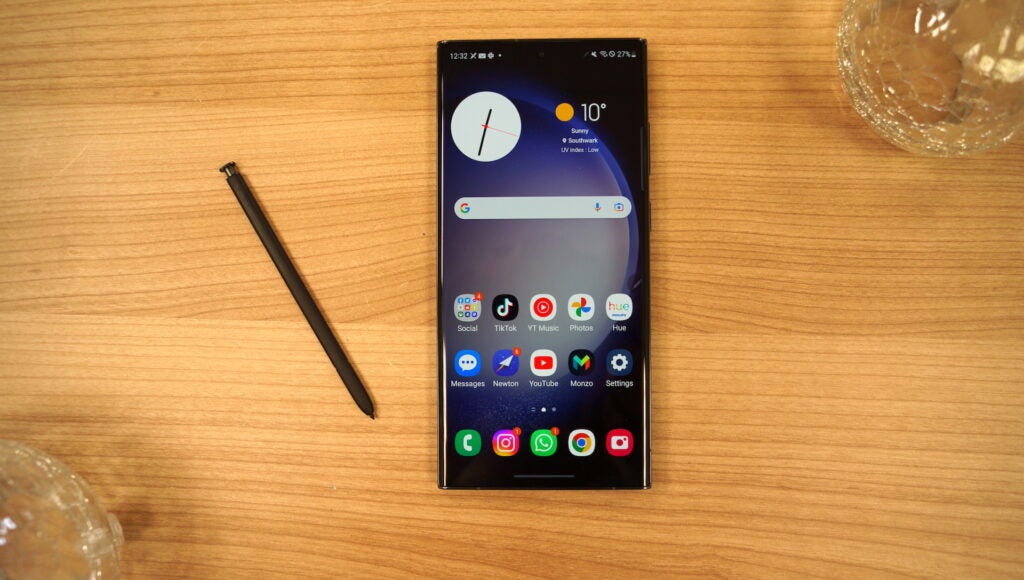
Samsung Galaxy S23 Ultra
The best Samsung Android phone
Pros
- 200MP camera delivers in both well-lit and low-light conditions
- Top-notch performance from the Snapdragon 8 Gen 2 for Galaxy
- All-day battery life
- Stunningly detailed 6.8in 120Hz display
Cons
- Very expensive
- Relatively slow 45W charging
- Difficult to use one-handed
The very best Samsung Android phone we’ve reviewed is the Samsung Galaxy S23 Ultra. It’s the option to choose if you want a really high-end, luxury experience – and are happy to pay for the privilege.
The S23 Ultra may not be a completely different beast from last year’s excellent S22 Ultra, but small but meaningful upgrades to performance and camera allow it to stand apart from most other flagships in 2023.
Let’s start with performance. The S23 Ultra ditches the Exynos/Snapdragon split for the past few years and worked with Qualcomm on an exclusive version of its latest top-end chipset dubbed the Snapdragon 8 Gen 2 for Galaxy, allowing the S23 Ultra to remain slightly faster and more powerful than other 2023 flagships like the OnePlus 11.
The biggest upgrade of all has to be the inclusion of a new 200MP rear camera. The upgraded camera offers an all-around improvement on the already-capable 108MP camera of the S22 Ultra, particularly in low light, with this year’s model able to capture more light, more detail and more colour via 16-in-1 pixel binning tech. It also allows you to take photos of the stars in the phone’s astrophoto mode, and it benefits low-light video too.
The other cameras, including a 12MP ultrawide and two 10MP telephoto lenses at 3x and 10x, remain largely unchanged, but the latter still offers some of the best quality 10x images around. There’s also Samsung’s 100x Space Zoom that’ll let you take photos of the moon but not much else.
Cameras aside, the other big reason to get the Galaxy S23 Ultra is the impressive 6.8-inch dynamic AMOLED 2X display with its WQHD+ resolution, dynamic 120Hz refresh rate and support for HDR10+ and Dolby Vision delivering a stunning viewing experience whether you’re scrolling through TikTok or watching the latest Hollywood blockbuster on Netflix. It’s plenty bright, and boasts support for the S23 Ultra’s built-in S Pen that allows you to doodle on-screen with an impressively low latency of 2.3ms.
Throw in all-day battery life with a 5,000mAh battery and you’ve got a capable premium smartphone. It’s not perfect, with relatively slow 45W charging, a large, bulky design that makes it hard to use one-handed and an extremely high-end price tag, but it’s certainly the most capable Samsung smartphone around.
Reviewer: Lewis Painter
Full review: Samsung Galaxy S23 Ultra Review
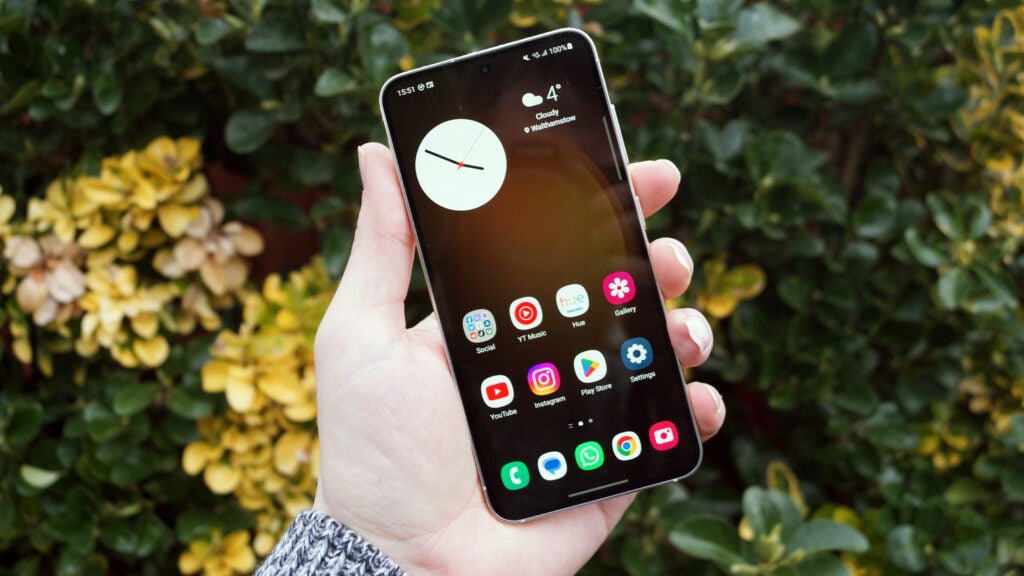
Samsung Galaxy S23
The best Android phone under £1000/$1000
Pros
- Pocketable, minimalistic design
- All-day battery life
- True flagship performance
Cons
- Near-identical to Galaxy S22
- Slow charge speeds
- Display only drops to 48Hz
The S23 Ultra may be the very best handset in Samsung’s locker, but it’s far from the only one in there vying for your attention; the standard Galaxy S23 is also a standout smartphone with a more compact design than many competing flagships.
Compared to the bulky S23 Ultra, the Galaxy S23 is much smaller and easier to manage. That is largely down to the use of a smaller 6.1in display, but it’s still very much top-end with a dynamic AMOLED 2x 120Hz panel that delivers crisp, bright and vibrant visuals, and it’s perfectly serviceable for watching YouTube videos and TikTok. Besides, those that demand a larger screen could always opt for the near-identical (but larger) Galaxy S23 Plus.
Elsewhere, it boasts top-end performance via the exclusive Snapdragon 8 Gen 2 for Galaxy exclusive to the S23 range, a versatile camera system consisting of a wide, ultrawide and 3x telephoto lens, and it fixes one of the biggest issues with its predecessor; battery life.
Despite having a smaller battery than much of the competition, the improved energy efficiency of the Galaxy S23 means it’s a comfortable all-day device, still managing to reach the end of the day with 30-40% charge on most days.
Of course, it doesn’t have the big 200MP camera upgrade of the S23 Ultra, images can look a little over-saturated and charging is pretty slow at just 25W, so it’s far from perfect, but it’s an excellent compact handset that you should seriously consider.
Reviewer: Lewis Painter
Full review: Samsung Galaxy S23 Review
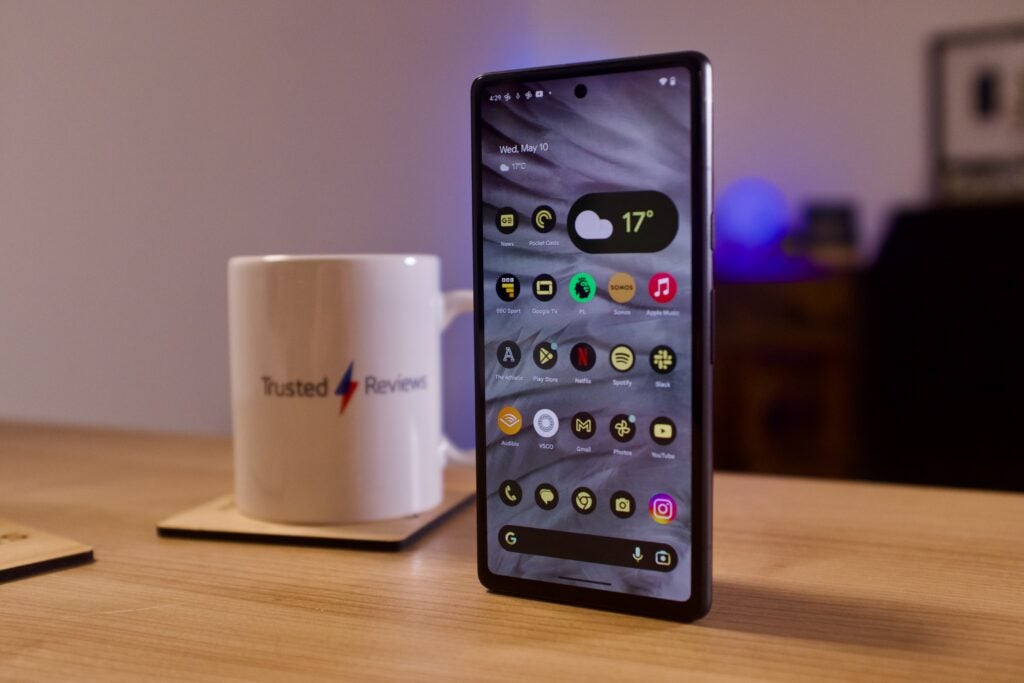
Google Pixel 7a
The best value Android phone
Pros
- Excellent camera for the price
- Plenty of upgrades over the Pixel 6a
- Smart software
- Some nice colour options
Cons
- Middling battery life
- Achingly slow charging
The Pixel 7a is a compact Android phone with an excellent camera, Google’s fantastic software and a price tag that won’t break the bank. It’s one of our favourite Android phones on the market right now.
Despite its more affordable price tag, it matches many of the essential features of the more expensive Pixel 7 and boasts several advantages over the Pixel 6a. Among these advantages are Qi wireless charging, 8GB of memory, a faster 90Hz screen (compared to the Pixel 6a’s 60Hz), and a more robust body.
The Pixel 7a also has an impressive camera with a new 64MP sensor that produces excellent images in various lighting conditions and accurately captures skin tones. At this price, there isn’t a better phone included on this list
While the 6.1-inch 90Hz OLED screen on the Pixel 7a is comparable to the slightly larger Pixel 7’s 6.3-inch display, the Pixel 7 Pro has the best screen among the Pixel phones.
The Pixel 7a is powered by the same Tensor G2 chip found in the Pixel 7, Pixel 7 Pro, and Pixel Fold. This offers adequate performance for the price point and handles many of the phone’s AI features such as call screening and voice recording.
However, the Pixel 7a’s battery life is mediocre, and charging can be slow. Though the phone can typically last a day, users may need to recharge quickly on busy days with heavy screen usage – something our reviewer had to do on a few occasions. It can also take over 100 minutes for a full charge and you’ll need to provide your own charger.
Reviewer: Max Parker
Full review: Google Pixel 7a Review
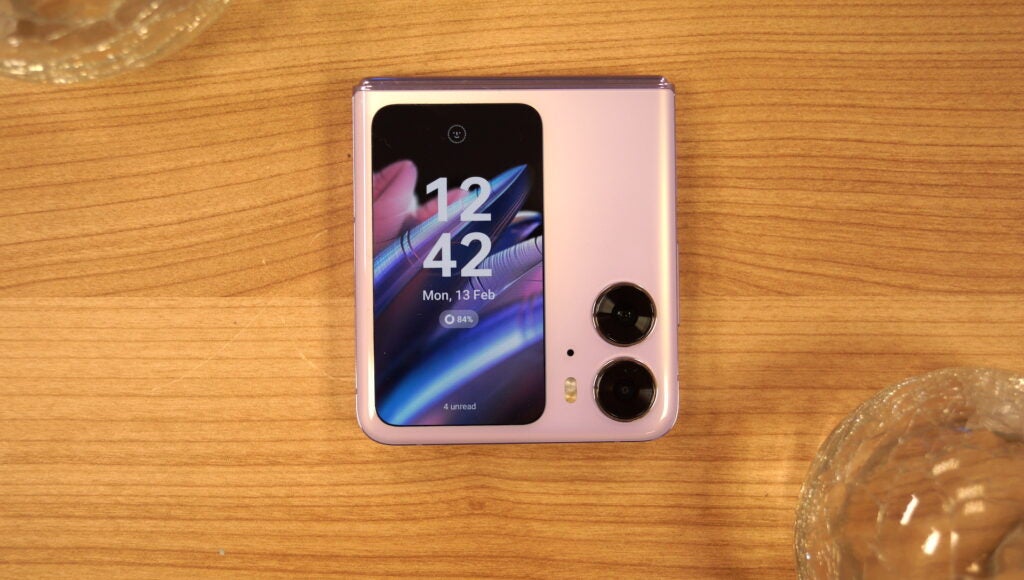
Oppo Find N2 Flip
The best Android phone for clamshell fans
Pros
- Most affordable clamshell foldable around
- Gapless folding mechanism
- All-day battery life
- Versatile folding form factor
Cons
- Performance isn’t quite flagship-level
- Less water resistant than rivals
- Software needs some tweaks
- Foldable display can be a fingerprint magnet
After years of Samsung dominating the clamshell foldable market with its Galaxy Z Flip range, Oppo has knocked Samsung off its perch with the Find N2 Flip. It’s the best clamshell foldable available at the moment, fixing many of the complaints with clamshells in general, as well as boasting key improvements compared to Samsung’s foldable.
For those unaware, a clamshell foldable is designed much like an old-school flip phone. When open, you can experience a 6.8-inch AMOLED display with a dynamic 120Hz refresh rate and support for HDR10+, and when it’s closed, it’s about half the size of a typical big-screen smartphone, making it easy to carry and slip into a pocket.
The crease caused by foldables has always been an issue, and while it won’t be going away anytime soon, Oppo’s second-gen Flexion hinge system really does minimise how noticeable it is, both when looking at it and when running your finger over it. There’s still a subtle change in feel, but nowhere near as noticeable as other foldables.
The Find N2 Flip’s 3.26-inch outer display is the largest out there, providing plenty more screen space for notifications than the Galaxy Z Flip 4 while offering a more curated experience than the Motorola Razr with custom widgets designed for Oppo’s foldable. It allows you to reply to incoming messages, take photos using the high-quality rear lenses with a live preview, check the weather and more without having to actually open the phone.
It also fixes one of the big complaints about clamshell foldables, battery life. The Find N2 Flip boasts true all-day battery life with a 4300mAh battery, and 45W fast charging means it’ll go from flat to full in under an hour.
Throw in great performance from a custom Dimensity 9000+ chipset, capable cameras in the form of a 50MP main, 8MP ultrawide and 32MP selfie camera with autofocus, a stunning design with no visible gap when closed and a price tag cheaper than any other clamshell foldable on the market and you’ve got the best foldable clamshell around.
Reviewer: Lewis Painter
Full review: Oppo Find N2 Flip Review
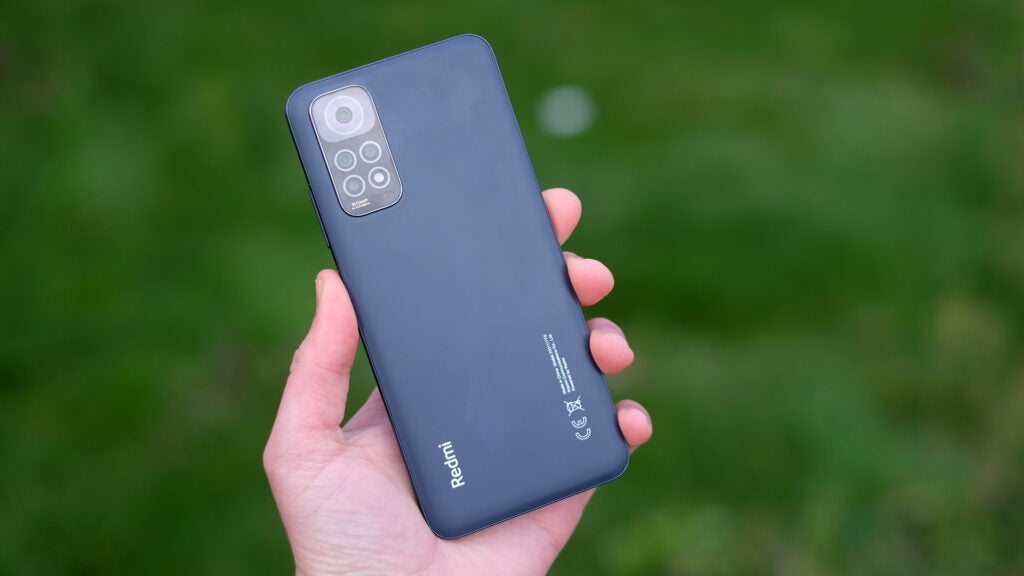
Xiaomi Redmi Note 11
The best cheap Android phone
Pros
- Vibrant OLED screen
- Long battery life
- Stereo speakers
Cons
- Mediocre gaming performance
- Camera stumbles with trickier scenes
- No 5G mobile internet
If you want an excellent, and very affordable, Android phone then the Redmi Note 11 is a strong pick and one of the best cheap phones around. Considering the much lower price, it’d be unfair to compare this to the far pricier phones on this list; however it still stands out in certain areas.
We particularly liked the display, which uses the same OLED tech as all the other phones above. It measures 6.43-inches, has a smooth 90Hz refresh rate and great colour reproduction that makes this display just entrancing when you’re watching films or playing games.
We were impressed with the battery life and the speakers too, though were less enamoured with the camera when it came to taking pictures in difficult conditions, and the mediocre performance was a tad disappointing too.
The phone also misses 5G and the faster download speeds that come with the modern network tech. This isn’t a dealbreaker for us, as we don’t think 5G is a vital feature yet, but it is something available at this price. The Moto G50, for example, costs around the same price and has 5G. But then that phone sacrifices screen quality. If you want a phone with an OLED display and 5G, we’d suggest the OnePlus Nord CE 2.
Reviewer: Andrew Williams
Full review: Xiaomi Redmi Note 11 Review
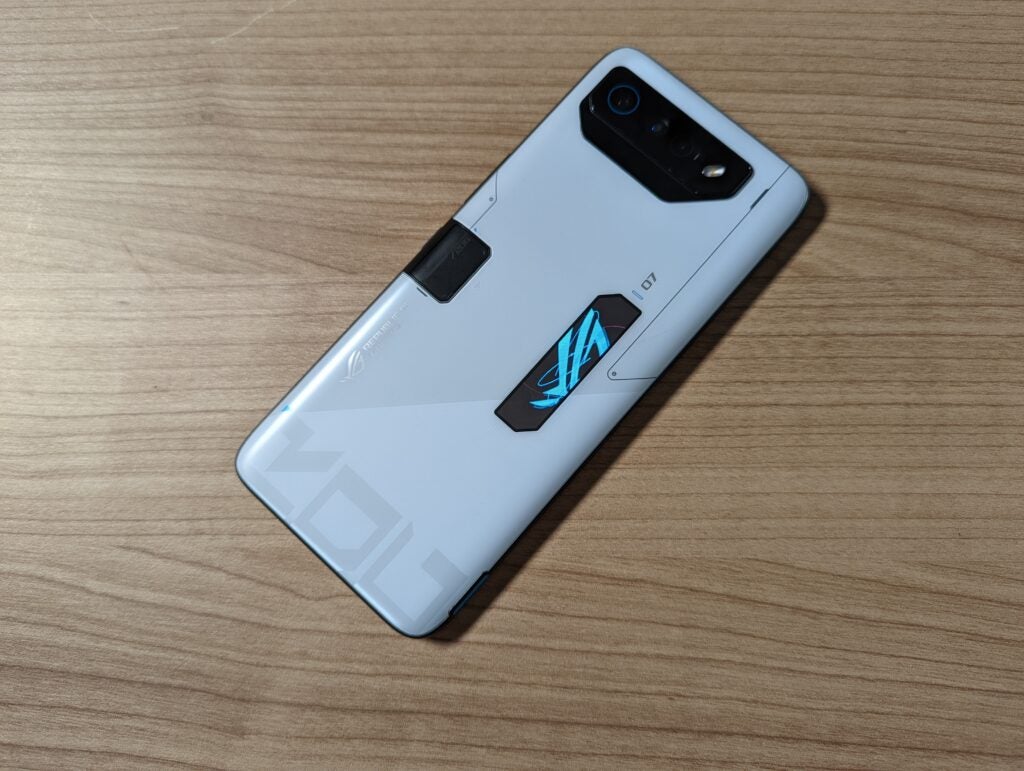
Asus ROG Phone 7 Ultimate
The best Android gaming phone
Pros
- Elite performance
- Mammoth battery life
- Loud and booming speakers
- AirTriggers improve gaming controls
Cons
- Very expensive
- Too similar to ROG Phone 7
The Asus ROG Phone 7 Ultimate is not the most rounded Android phone on this list, but it excels at its main point of interest: gaming.
There are oodles of gaming-centric features here, from the AirTriggers that allow for gamepad-esque controls to the Armoury Crate software that enables you to fiddle with the performance settings and display frame rate, temperature and GPU workload figures while you play your favourite mobiles games.
Thanks to the Snapdragon 8 Gen 2 chip, this is one of the most powerful Android phones you can buy. The superb cooling system also allows the phone to maintain a high performance over long stretches of heavy workloads, with our benchmark tests showing it to have the slight advantage over the Samsung Galaxy S23 Ultra on that front.
The colossal 6000mAh battery is also an important inclusion, with our reviewer noting that it allowed the ROG Phone 7 Ultimate to last well over a day from normal use. And if you fancied playing Call of Duty Mobile nonstop, our tests indicate the phone could last over seven hours on a single charge, which is remarkable.
The only major stumbling block for this phone is that it’s incredibly expensive, requiring a sum beyond the £1000/$1000 mark. As a result, it may be worth sacrificing a couple of features and opting for the cheaper Asus ROG Phone 7 instead. But if you fancy the most complete gaming phone currently available, then the Asus ROG Phone 7 Ultimate is a no brainer.
Reviewer: Ryan Jones
Full review: Asus ROG Phone 7 Ultimate review
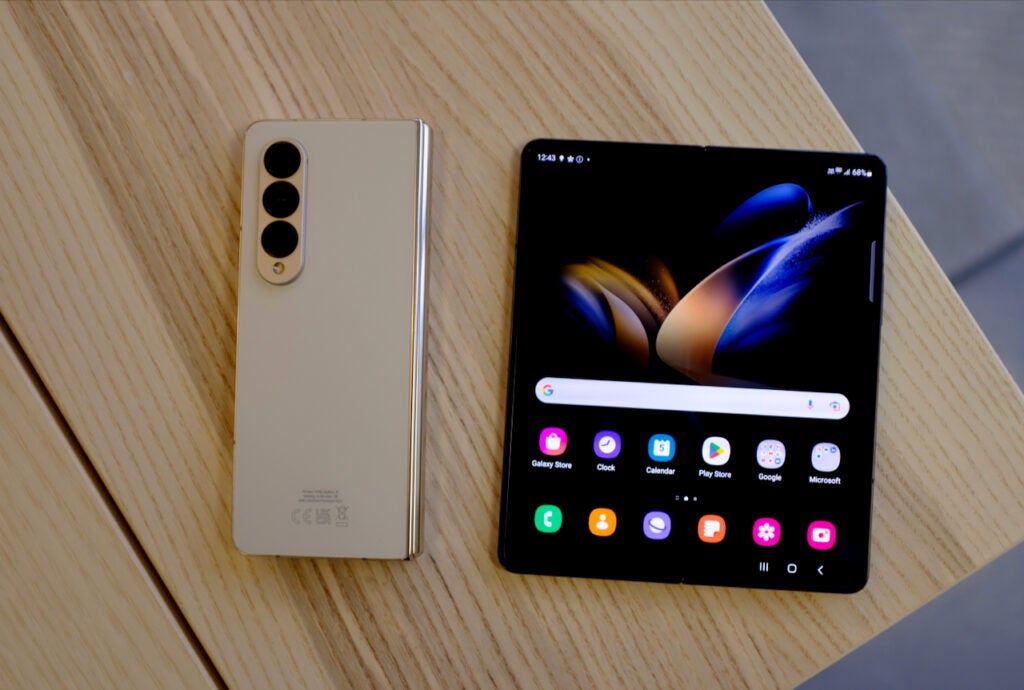
Samsung Galaxy Z Fold 4
The best foldable phone
Pros
- Smart UI tweaks
- Camera no longer an issue
- The form factor really does work
Cons
- Lack of apps making true use of the big inner screen limits usefulness
- Crease and thick body remain from the previous iteration
- Price still puts it out of reach for most
There are lots of phones at varying price points included in this list, however none of them is quite as pricey as the Galaxy Z Fold 4. For the hefty outlay though you’re getting the most futuristic Android phone around.
This is both a phone and tablet, making it ideal for productive tasks (you can add an S Pen for doodling and notes), gaming and even reading. No other offers the versatility you’ll get with a foldable. Samsung has also added a taskbar so you can easily jump between apps without always heading back to the homescreen – this is a great touch, and makes the Z Fold 4 feel even more like a tablet. It’s just a shame then that app support is still fairly minimal.
The camera system, which includes a main 50MP sensor, isn’t the best on this list but is still very capable, while the 4400mAh battery got our reviewer through a full day. We weren’t as impressed with the slow charging, though.
Durability has often let Samsung’s foldables down but this feels like the strongest Z Fold yet. The IPX8 water resistance remains, there’s stronger Gorilla Glas Victus on the front and the hinge feels sturdy. There’s even a satisfying thud when you close it up.
Reviewer: Max Parker
Full review: Samsung Galaxy Z Fold 4 review
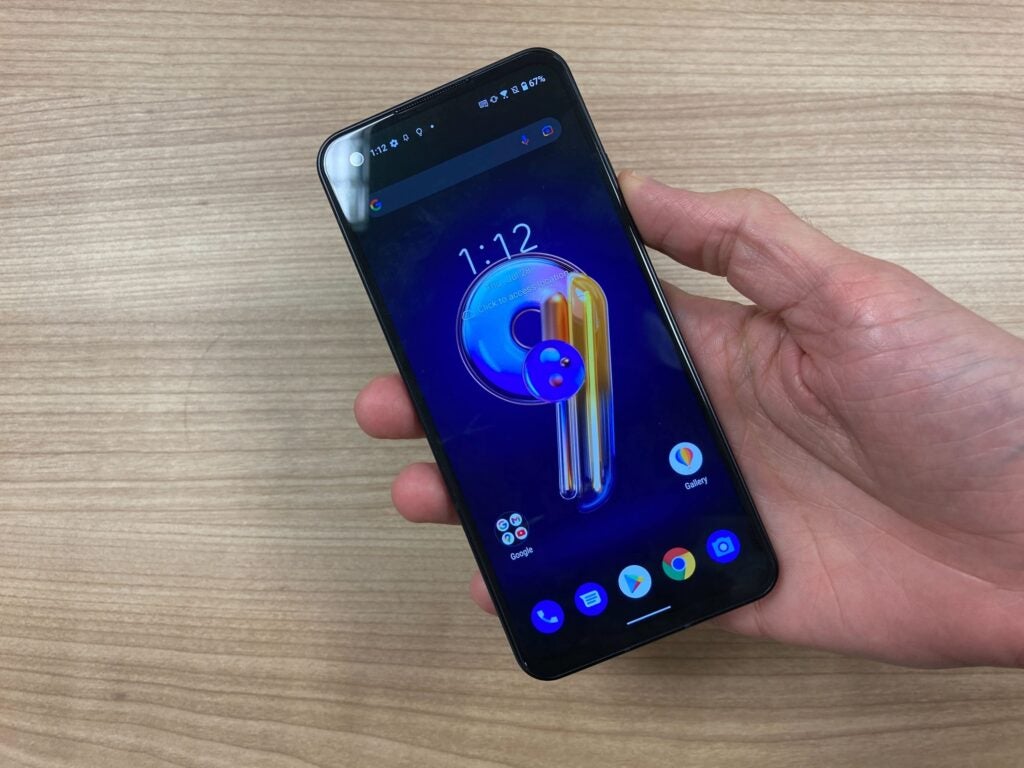
Asus Zenfone 9
The best small Android phone
Pros
- Small footprint
- Top-tier processor
- Very high quality camera hardware
- Has a headphone jack
Cons
- The finish does not seem hard-wearing
- Charging is a little slow
- Camera image processing lags behind the best
If you’ve been looking for a handset that’s slightly smaller than the others on this list – one that you could even use with just one hand for instance – then you can’t do much better than the excellent Asus Zenfone 9.
This device offers some similar qualities to the other Android smartphones above, including packing a Snapdragon 8 Plus Gen 1 chipset to give you all the muscle you need, and a strong dual camera system as well, but it also comes in a smaller (albeit fairly thick) package.
If you find that your hands aren’t quite big enough to wield some of the cumbersome phablets that have been mentioned above, then the 5.9-inch screen on this device could suit you right down to the ground.
Reviewer: Andrew Williams
Full review: Asus Zenfone 9 review
FAQs
While not vital yet, most of these phones are 5G so are futureproofed.
The Samsung Galaxy S23 Ultra is the best Android phone available right now.
The Samsung Galaxy S23 Ultra has the best all-round camera we’ve found on an Android phone, but the Vivo X90 Pro wins in low-light conditions.
We also considered…
Comparison Specifications
UK RRP
USA RRP
EU RRP
CA RRP
AUD RRP
Manufacturer
Screen Size
Storage Capacity
Rear Camera
Front Camera
Video Recording
IP rating
Battery
Wireless charging
Fast Charging
Size (Dimensions)
Weight
Operating System
Release Date
First Reviewed Date
Resolution
HDR
Refresh Rate
Ports
Chipset
RAM
Colours
Stated Power
Trusted Reviews test data
We run all the phones we review through a number of tests to gauge performance and other aspects, like screen quality. The S22 Ultra, for example, has a wonderfully accurate display with a high 770 nits of sustained brightness.
Geekbench 5 single core
Geekbench 5 multi core
Geekbench 6 single core
Geekbench 6 multi core
sRGB
Adobe RGB
DCI-P3
Max brightness
1 hour video playback (Netflix, HDR)
30 minute gaming (intensive)
30 minute gaming (light)
1 hour music streaming (online)
1 hour music streaming (offline)
Time from 0-100% charge
Time from 0-50% charge
30-min recharge (included charger)
15-min recharge (included charger)
30-min recharge (no charger included)
15-min recharge (no charger included)
3D Mark – Wild Life
3D Mark – Wild Life Stress Test
3D Mark – Sling Shot
GFXBench – Aztec Ruins
GFXBench – Car Chase


